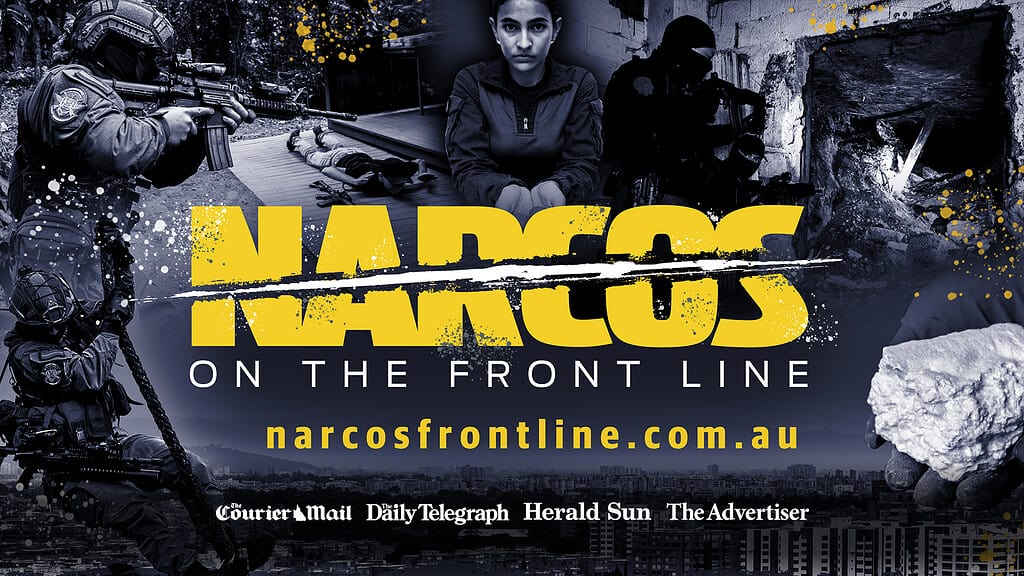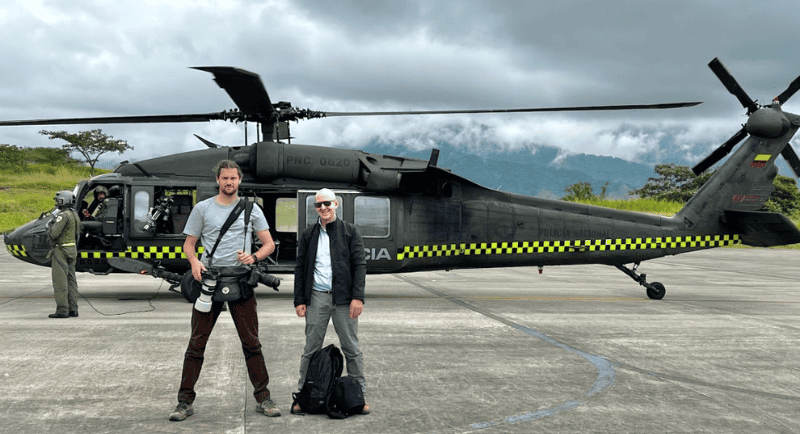Black Hawk helicopters, machine guns, cocaine, methamphetamine – you would think Herald Sun senior journalist Stephen Drill just came back from the set of the newest season of Narcos.
However, what Drill just came back from was a very real investigation into the global drug trade being fuelled by Australia’s insatiable appetite for illicit substances.
In the seven-part docuseries, Narcos on the Front Line, senior reporter Drill and video journalist Jason Edwards travelled to the cocaine fields of Colombia, the methamphetamine labs in Mexico and the ports in Panama to expose the new and dangerous drugs which authorities in South America warn are about to flood Australian shores.
The docu-series takes viewers into the source of where the drugs are coming from – exposing not only the deadly ingredients used to produce cocaine but the price being paid by locals at the hands of deadly cartels of Latin America.

Mediaweek spoke to Stephen Drill about his investigation and the sheer scale of drug production that uses extremely dangerous ingredients that threaten the lives of not only the Australians who take them but users worldwide.
Drill travelled to Panama, Mexico and Colombia with the AFP who gave him unprecedented access to makeshift drug production stations deep in the jungle as well as narco tunnels that are used to smuggle cocaine and ice from Mexico into the United States.
Drill said what shocked him the most while overseas was the scale of all of it. He said while most of it is cocaine and methamphetamine, what he is really worried about is fentanyl.
“Everyone we spoke to was talking about fentanyl and it’s a real issue that, unfortunately, is inevitable that it comes to Australia,” he said.
While he was shocked about the scale of the production, Drill said one of the main things that stood out to him was the pride of the people in Colombia and Mexico.
“In Colombia, we didn’t speak to as many locals as we did in Mexico, but people there were really proud of their country and really angry that all it was known for was cocaine. So they want to try to change that.”
Drill touched on the danger of being in Mexico as a reporter and expressed that he felt they could be ambushed by cartels at any time, with the Mexican Navy escorting them with belt-fed automatic weapons on the back of Utes.
“We were pretty spoiled, to be honest. Everywhere we went we were protected by commandos with loads of M16s,” he said.
Their security personnel camped out at their car while they were having dinner each night as well as stayed out of the front of their hotel as they slept, but Drill says there was one time when the threat of danger became very real.
“We were taking a photo in our street in Lazaro Cardenas and we waited until sunset as Jason was keen to get some shots of the sunset. As we were waiting, people were gathering around as we were there just taking photos of the sunset and the Mexican Navy commandos with all our camera gear.
“It was no more than 15 minutes into standing there until the Navy came over and told us to pull the pin as it was getting dangerous. They said there are all these people here and all it takes is one person to call in the Mexican cartels. We had to get out of there quickly and once we moved, we were in a moving car within 60 seconds.”
The cycle of violence is all too common in the drug industry and Drill’s angle is the violence seen in Mexico and Colombia is fed by the drugs that people consume in Australia. He pins his whole investigation down on one point, and he hopes this point is the one that resonates with readers and viewers of the web series.
“We really need to see that the choices made in Sydney, Brisbane, Melbourne, Adelaide and Perth, all have real consequences for people overseas.
“There are people being murdered every single day for the price of a couple of grammes of cocaine in Sydney, we just need to start thinking about our choices a bit more.”
All seven episodes of Narcos on the Front Line are available now.
–
Top Image: Jason Edwards & Stephen Drill
